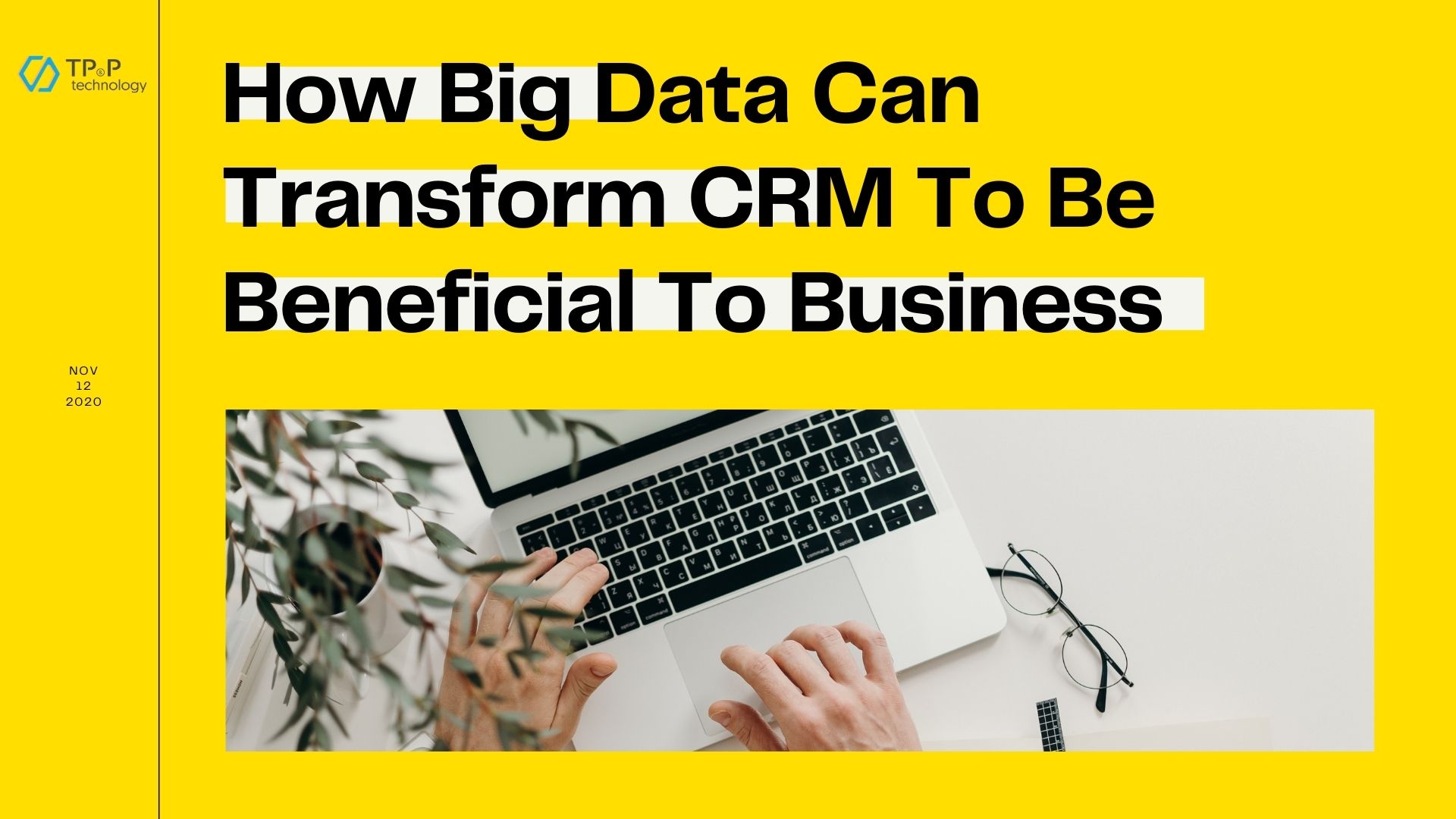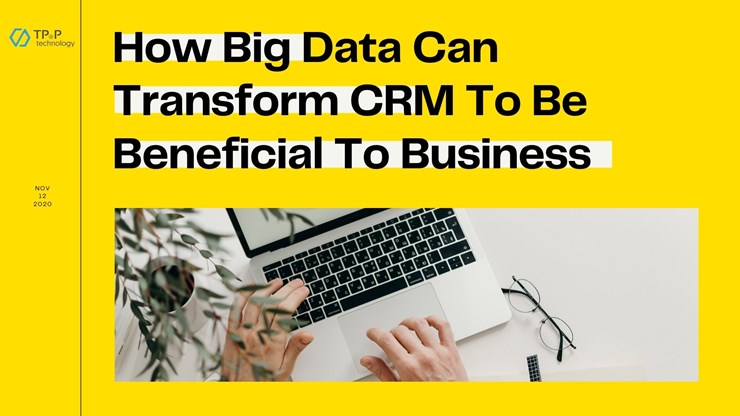
How Big Data Can Transform CRM To Be Beneficial To Business
Customer Relationship Management (CRM) includes one company’s interaction with its customers, both current and prospective. CRM is the touchpoint of anything customer-related. This is the prerequisite for better customer service. CRM has always been data-centric, but most of the data are structured data like contact information, last contact, product purchased, etc.
With Big data technology, we can store, process, and analyze large amounts of unstructured customer data and use this information to obtain more insights that are beneficial to the business. By using this technology, CRM software will become a true revenue-generating tool.
Read more about Big data consulting services: What Is Big Data Analytics? to have a rough idea about what it is, the opportunities and challenges it brings, how important it is to implement Big Data and its applications.
Over the past few years, in most cases, a CRM system did not meet expectations because, in reality, CRM was solely about customer relationship management. The main reason why CRM implementation fails are:
- Despite having a CRM system in the company, many companies’ employees are not actively involved in using and updating the system with high-quality data. Therefore, the company’s cultural change is essential, and perhaps more incentives should be used to encourage people to use it;
- Lack of clear technical goals lead to poor system performance and inaccurate data collection and storage;
- A lack of executives’ support for the CRM project. A CRM project is usually run by the IT department which is a big red flag indicating that that CRM project will fail.

Big Data and CRM
So, can big data complement CRM and prevent these failures?
It is totally up to the few essential steps we take when implementing big data CRM.
But first, let’s look at what it means to serve customers from a big data point of view. Customer service will produce better results, but it needs more than just relationships.
- Managing clients with structured data like addresses, contact information, and up-to-date is a part of big data CRM. Customer management is an inside-out approach in which businesses manage customers by sending messages and storing basic information about customers. To do this, Big data CRM uses predefined channels on specific business hours. This business-defined process lacks flexibility; however, it is critical to have it as it is the basis for understanding customer’s insights.
- Engaging customers with unstructured data like emails, tweets, social media posts, and comments, etc. Interacting can be customer-driven or outside-in. There is a two-way communication process and customers decide when s/he contacts the business, s/he can receive the response as fast as possible, even outside business hours. Everyone in the company should participate in the customer-driven process and channels.
- Analyze customer actions with structured data like click-throughs, bounce rates, online visits, etc, these actions usually are done by data analysts. Data analysts typically take action when they are asked to provide standardized information or reports to marketers regularly. With big data technology takes place, the role of data analysts will change dramatically as they will be required to be more proactive in delivering results on a more frequent basis, preferably in real-time.
- Understanding customers’ needs are where it gets really fun. Big data engineers use a mixed data approach to perform analytics that enables the organization to understand each customer in real-time. They can make predictive recommendations to develop or deliver the right products, at the right prices, and via the right channels. As a result, conversion rates will increase.
Take CRM to the next level
Together, the four aspects mentioned above add extra value to an organization and support traditional CRM to come on in leaps and bounds.
Businesses can utilize a variety of big data technologies to handle all large data streams that will flow into their organization due to the four domains. With the right algorithms, some analyzing actions can be done to better serve the customer, which includes:
- Sample analysis: Explore new patterns in data sets or combine data sets.
- Sentiment analysis: To find out what people are saying about one business’s product and service.
- Marketing analysis: Analyze customer interactions with organizations, but also with each other to optimize marketing decisions and messages.
- Recommendations analysis: Offer the best recommendations to customers to increase conversion rates.
- Influence analysis: To find out who influences whom.
The importance of executive support
Despite proper data collection, processing, and storage are part of the deal to make CRM valuable. Analyzing data using the right tools to obtain valuable information is also another critical part. But to take off a Big data CRM project, an organization needs to have a cultural shift.
This culture shift is starting from the executive’s support, especially C-suite level executives should fully support the implementation. With available support, a pilot project can be started, and when there are positive feedback and results, the organization will slowly learn and adapt, creating a cultural change.
Final Thoughts
Not knowing what customers need is the primary reason why many businesses fail. Customers who reach out to companies are expected to be recognized and cared for appropriately. Big data CRM can be a huge game-changer for your business transformation.
If you’re thinking about adopting big data technology or CRM, or even big data CRM, TP&P Technology is the top software outsourcing company that is also a big data consulting company and Odoo CRM official partner.
Talk to one of our experts to know how we can help you!



